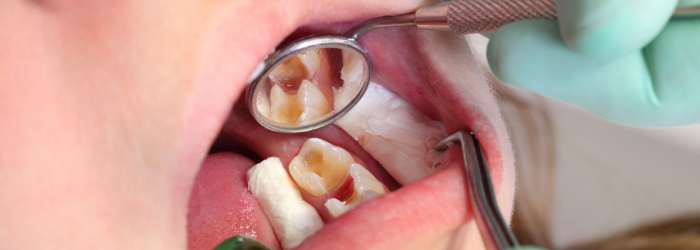Dental emergencies can be a frightening experience, but knowing how to handle them can make all the difference in the outcome. In this blog, we’ll explore the different types of dental emergencies and provide tips on how to handle them. If you’re experiencing a dental emergency, it’s essential to seek immediate treatment from your dentist or an emergency dental care provider.
Types of Dental Emergencies
- Toothache
A toothache is a common dental emergency and can be caused by a variety of factors, including tooth decay, gum disease, or a cracked tooth. If you’re experiencing a toothache, rinse your mouth with warm water and floss around the affected tooth to remove any food particles that may be causing the pain. Over-the-counter pain relievers can also provide temporary relief. It’s essential to see your dentist as soon as possible to determine the cause of the toothache and receive appropriate treatment.
- Chipped or Broken Tooth
A chipped or broken tooth is a dental emergency that requires immediate attention. Rinse your mouth with warm water and place a cold compress on the affected area to reduce swelling. If possible, save any pieces of the tooth and bring them with you to your dental appointment. Your dentist will determine the best course of treatment, which may include bonding, veneers, or a dental crown.
- Knocked-Out Tooth
A knocked-out tooth is a dental emergency that requires immediate attention. If possible, retrieve the tooth and hold it by the crown (the part that is visible above the gum line). Rinse the tooth gently with water, but do not scrub or remove any tissue fragments. If you’re able to do so, try to reinsert the tooth into the socket and hold it in place by biting down on a clean cloth or gauze. If reinsertion isn’t possible, place the tooth in a container of milk or saliva and seek immediate dental attention.
- Lost Filling or Crown
A lost filling or crown is a dental emergency that requires prompt attention. If a filling or crown has fallen out, rinse your mouth with warm water and try to place the restoration back into the tooth using dental cement or toothpaste. Over-the-counter pain relievers can also provide temporary relief. It’s essential to see your dentist as soon as possible to prevent further damage to the tooth.
- Abscessed Tooth
An abscessed tooth is a dental emergency that can be extremely painful and requires immediate attention. An abscessed tooth is caused by an infection in the tooth or gums and can lead to swelling, fever, and difficulty swallowing. Rinse your mouth with warm salt water and use over-the-counter pain relievers to manage the pain. Seek immediate dental care to prevent the infection from spreading to other parts of the body.
How to Handle a Dental Emergency
- Stay Calm
Dental emergencies can be scary, but it’s essential to stay calm and avoid panicking. Take a few deep breaths and focus on the steps you need to take to address the emergency.
- Contact Your Dentist or Emergency Dental Care Provider
If you’re experiencing a dental emergency, contact your dentist or an emergency dental care provider as soon as possible. Many dental offices have emergency services available outside of regular business hours.
- Rinse Your Mouth with Warm Water
If you’re experiencing a toothache, chipped or broken tooth, or lost filling or crown, rinse your mouth with warm water to clean the affected area and remove any debris or food particles.
- Apply a Cold Compress
If you’re experiencing swelling or pain, apply a cold compress to the affected area to reduce inflammation and numb the pain.
